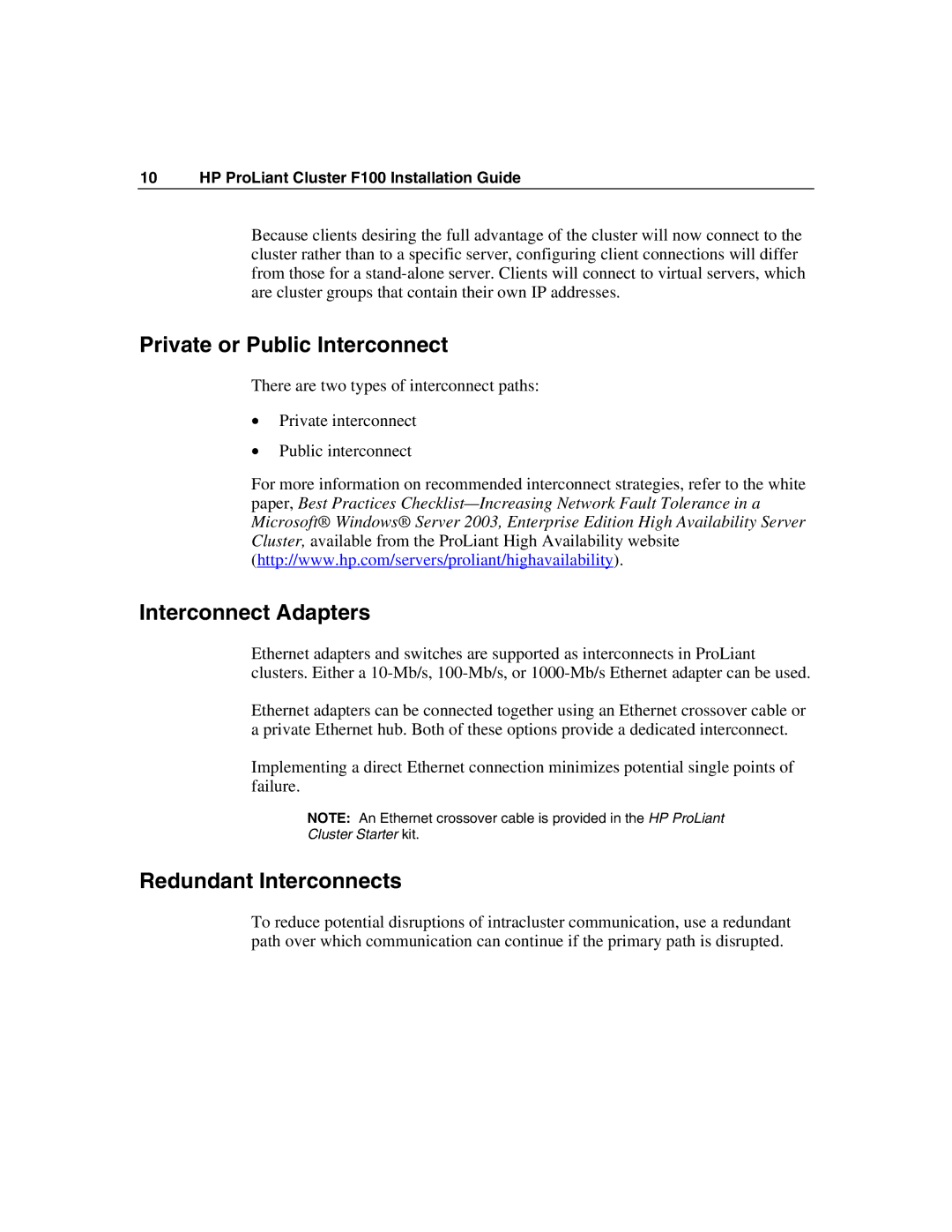10 HP ProLiant Cluster F100 Installation Guide
Because clients desiring the full advantage of the cluster will now connect to the cluster rather than to a specific server, configuring client connections will differ from those for a
Private or Public Interconnect
There are two types of interconnect paths:
•Private interconnect
•Public interconnect
For more information on recommended interconnect strategies, refer to the white paper, Best Practices
Interconnect Adapters
Ethernet adapters and switches are supported as interconnects in ProLiant clusters. Either a
Ethernet adapters can be connected together using an Ethernet crossover cable or a private Ethernet hub. Both of these options provide a dedicated interconnect.
Implementing a direct Ethernet connection minimizes potential single points of failure.
NOTE: An Ethernet crossover cable is provided in the HP ProLiant
Cluster Starter kit.
Redundant Interconnects
To reduce potential disruptions of intracluster communication, use a redundant path over which communication can continue if the primary path is disrupted.
